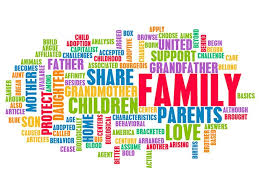Often practitioners get hung up on whether an entity in which the SMSF has invested is deemed a ‘related party’ or not!
The first consideration is to determine whether the SMSF has invested in excess of the 5% in-house asset threshold, OR if it hasn’t breached the 5% threshold, do the trustees intend to increase it’s holding in related party assets (in particular the trust in question) that could push the SMSF over the 5% threshold in future?
If the answer to both is NO, then whether the investment in the Trust is deemed a related party investment isn’t relevant.
However, if the 5% threshold is breached, or intentions are to breach that threshold at some point in the future, then the structure of that Unit Trust needs to be explored BEFORE the SMSF invests in order to meet any of the in-house asset exemptions as listed under SISA s.71(1).
Why BEFORE the SMSF invests in the Unit Trust?
The critical point with respect to 13.22C entities is the entity must be 13.3A compliant at all times from the time the SMSF holds an interest in that entity. If a 13.22D event occurs at any time while the SMSF holds an interest, then the s.71(1) shelter exemption is lost and the SMSF must reduce it’s holding below the 5% in-house asset threshold.
The circumstances in which an entity is considered a related party trust (s.70E(2)) is where:
– A group in relation to the entity has a fixed entitlement to more than 50% of the capital or income of the trust (s.70E(2)(a)), or
– The trustee of the trust, or a majority of the trustees of the trust, is accustomed or under an obligation (whether formal or informal), or might reasonably be expected, to act in accordance with the directions, instructions or wishes of a group in relation to the entity (whether those directions, instructions or wishes are, or might reasonably be expected to be, communicated directly or through interposed companies, partnerships or trusts) (s.70E(2)(b)), or
– A group in relation to the entity is able to remove or appoint the trustee, or a majority of the trustees, of the trust (s.70E(2)(c)).
If the trust meets one of the above circumstances, the trust is deemed a related party unit trust and will only be considered an exempt in-house asset if the trust meets the exemption criteria as set out in s.71(1) – widely held trust (s.71(1)(h), the provisions of SISR 13.3A (s.71(1)(j)(ii)) or units acquired in a Pre-1999 trust prior to June 2009 (s.71A).
For any technical questions in relation to whether a unit trust is a related party to the SMSF or not, or to find out about how our services can support your business, call our team on 03-5226 3599 or email [email protected]
Related Posts
- 2022-23 October Federal Budget SMSF Recap ( October 26, 2022 )
- Downsizer contributions; the scheme helping retirees bolster their super balance ( April 13, 2022 )
- Conditions of Release ( February 28, 2022 )
- The age-old debate; Corporate or Individual trustees ( February 4, 2022 )
- Pink Diamonds: Collectable or Precious Metal? ( November 15, 2021 )
- Let’s Talk Property Valuations ( September 10, 2021 )
- How to invest in Cryptocurrency for your SMSF – The right way ( August 16, 2021 )
- How to get SuperStream ready! ( August 6, 2021 )

